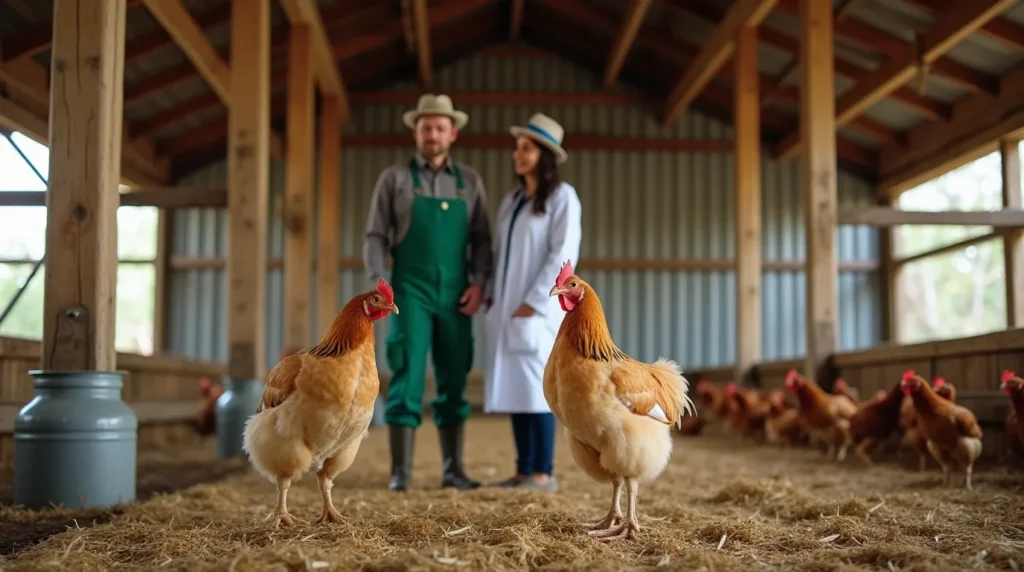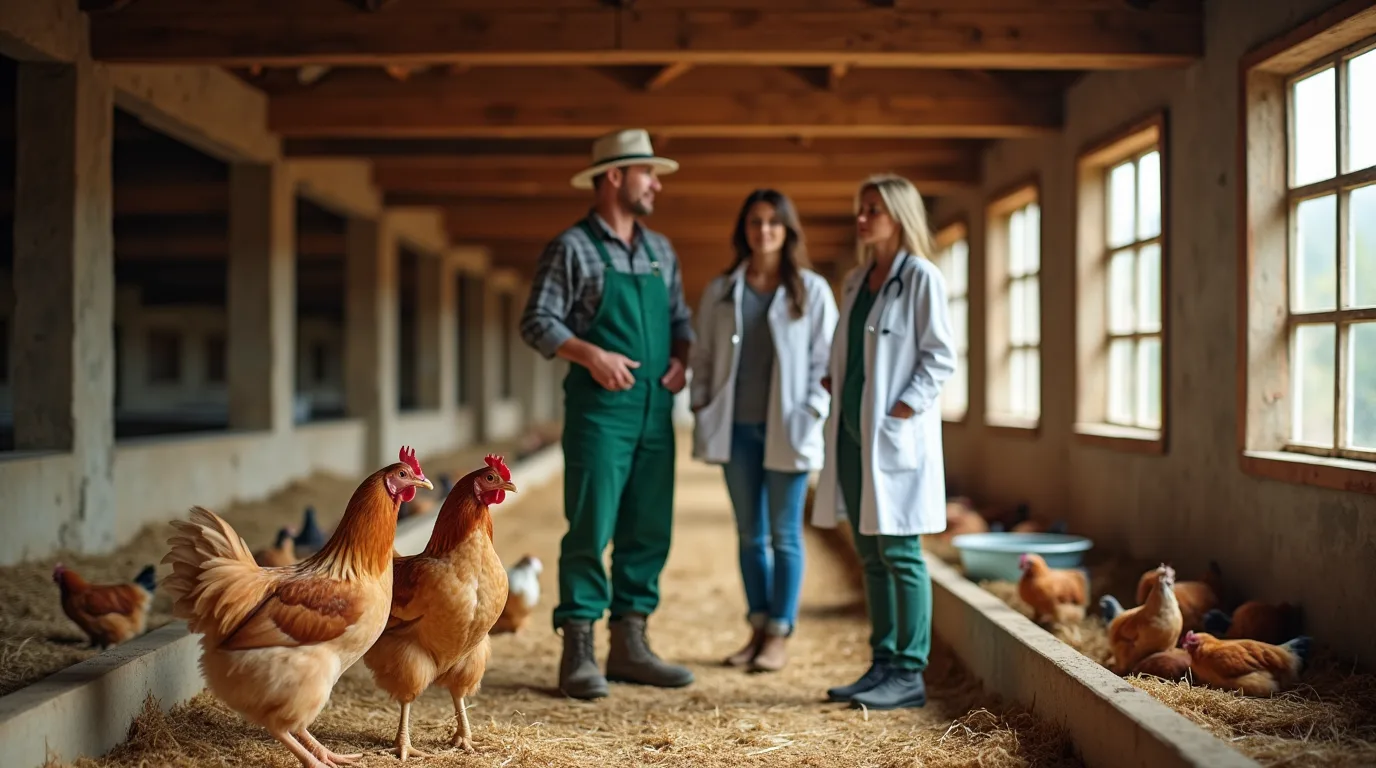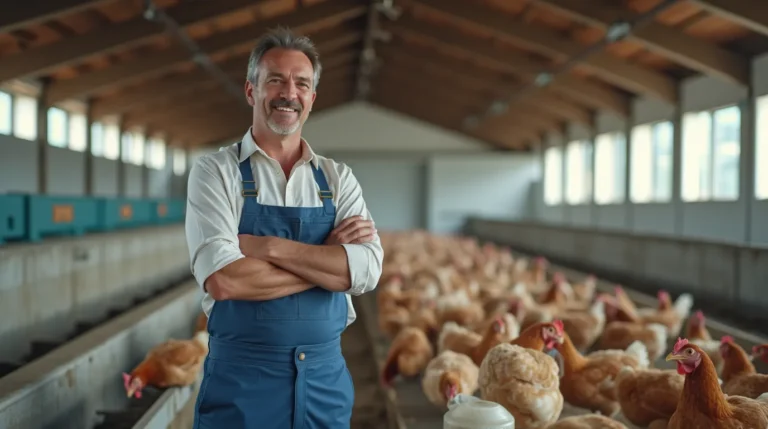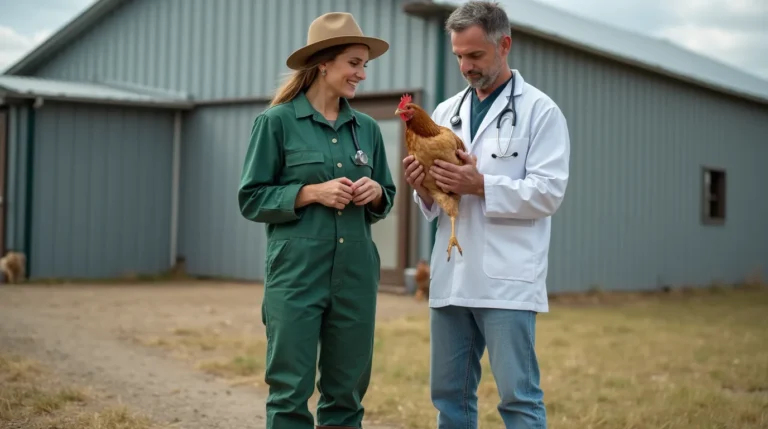Protect your poultry from devastating avian influenza in Poultry, outbreaks with expert prevention strategies. Learn 6 critical steps to safeguard your flock’s health and survival.

Table of Contents
Avian influenza (AI) represents one of the most significant threats to poultry farming worldwide, causing substantial economic losses and posing potential risks to human health. This highly contagious viral disease can decimate entire flocks within days, making prevention crucial for both commercial and small-scale poultry operations. Understanding the intricacies of avian influenza in poultry and implementing robust preventive measures is not just a recommendation—it’s a necessity for sustainable and responsible farming.
Understanding Avian Influenza: A Comprehensive Overview
What is Avian Influenza?
Avian influenza, commonly known as bird flu, is a viral infection that affects various bird species, with domestic poultry being particularly vulnerable. The virus can be classified into two primary categories:
- Low Pathogenic Avian Influenza (LPAI)
- Typically causes mild symptoms
- Can mutate into more dangerous forms
- Highly Pathogenic Avian Influenza (HPAI)
- Extremely severe and often fatal
- Can kill up to 100% of infected birds within 48 hours
Transmission Pathways
Avian influenza spreads through multiple transmission routes:
- Direct contact with infected birds
- Contaminated feed and water sources
- Wild bird droppings
- Shared equipment and clothing
- Airborne viral particles
6 Critical Steps to Prevent Avian Influenza Outbreaks
Step 1: Biosecurity Fundamentals
Implement Strict Access Control
- Create designated entry/exit points for farm personnel
- Require mandatory clothing and footwear changes
- Use dedicated disinfection stations
- Limit visitor access to poultry areas
Disinfection Protocols
- Use EPA-approved disinfectants
- Clean and sanitize equipment regularly
- Establish foot bath systems at entry points
- Maintain comprehensive cleaning logs
Step 2: Wild Bird Separation
Physical Barriers
- Install enclosed chicken runs
- Use netted enclosures
- Remove standing water that attracts wild birds
- Minimize outdoor feed exposure
Habitat Management
- Keep grass short around chicken areas
- Remove potential wild bird nesting sites
- Use visual deterrents like reflective tape
- Consider temporary housing during high-risk periods
Step 3: Comprehensive Monitoring and Testing
Regular Health Checks
- Perform daily flock health assessments
- Train staff to recognize early symptoms
- Maintain detailed health records
- Implement rapid response protocols
Diagnostic Testing
- Conduct periodic viral screenings
- Work with veterinary professionals
- Use RT-PCR testing for early detection
- Establish relationships with local veterinary labs
Step 4: Vaccination Strategies
Targeted Vaccination Programs
- Consult veterinary experts for region-specific vaccines
- Follow recommended vaccination schedules
- Maintain proper vaccine storage conditions
- Document all vaccination activities
Vaccine Types
- Inactivated vaccines
- Live attenuated vaccines
- Recombinant vaccines
Step 5: Nutrition and Immune Support
Balanced Nutrition
- Provide high-quality, nutritionally complete feed
- Include immune-boosting supplements
- Ensure consistent water quality
- Monitor feed storage conditions
Immune System Enhancement
- Use probiotics
- Include vitamin and mineral supplements
- Minimize stress factors
- Maintain optimal environmental conditions
Step 6: Emergency Preparedness
Rapid Response Plan
- Develop comprehensive outbreak management protocol
- Create isolation zones
- Establish communication channels with authorities
- Prepare emergency depopulation procedures if necessary
Documentation and Reporting
- Maintain detailed farm health records
- Report suspicious symptoms immediately
- Collaborate with local agricultural departments
- Stay informed about regional AI developments
Recommended Amazon Products for Poultry Farming
- Poultry Disinfectant Spray
- Biosecurity Boot Covers
- Chicken Coop Sanitizer Kit
- Professional Veterinary Thermometer
Avian Influenza in Poultry (FAQ)
Q1: How quickly can avian influenza spread? A: Avian influenza can spread within hours, potentially infecting an entire flock in 24-48 hours.
Q2: Can humans contract avian influenza? A: While rare, some strains can transmit to humans, especially with prolonged close contact.
Q3: Are small backyard flocks at risk? A: Yes, small flocks are equally vulnerable and require the same preventive measures as commercial operations.
Q4: How often should biosecurity protocols be reviewed? A: Review and update biosecurity protocols at least annually or after significant environmental changes.
Q5: What are the primary symptoms of avian influenza? A: Symptoms include sudden death, reduced egg production, respiratory distress, and neurological disorders.
Conclusion
Preventing avian influenza requires a multifaceted, proactive approach. By implementing these six critical steps, poultry farmers can significantly reduce the risk of devastating outbreaks. Remember, prevention is always more cost-effective and humane than managing a full-scale infection.
Share your experience in the comments! What are your best tips for raising healthy poultry?
Explore more expert poultry care tips and guides on BlithePet comprehensive farm management strategies.





